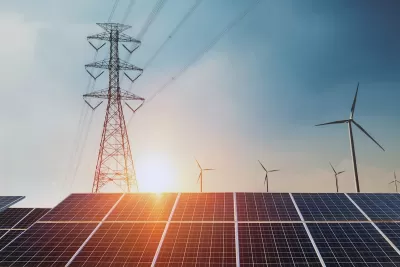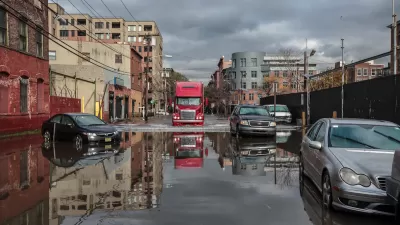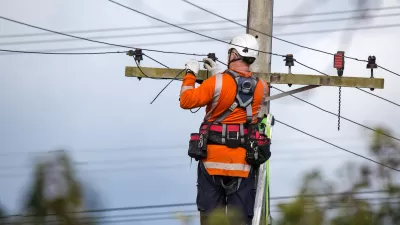How preparation and modern infrastructure can prevent power failures in an era of climate change.

The contrasting experiences of Texas and California during recent extreme weather events highlight the critical importance of resilient energy infrastructure and strategic planning in the face of climate change. For Yale Climate Connections, Dana Nuccitelli examines how Texas’ lack of preparation during Winter Storm Uri in February 2021 led to catastrophic power outages, while California’s proactive measures helped the state avoid major blackouts during record-breaking heat waves.
In Texas, over 4.5 million homes lost power during the storm, resulting in hundreds of deaths and revealing significant vulnerabilities in the state’s energy grid. Despite initial claims by Texas Gov. Greg Abbott that renewable energy was to blame, investigations showed that failures occurred across all types of power generation, including natural gas, coal, and wind. The primary issue was a lack of winterization and preparation for severe cold, not the inherent reliability of any particular energy source.
In contrast, California faced its own challenges during a record heatwave in 2020, which led to brief rolling blackouts. However, in the years following, the state made significant investments in grid management, battery storage, and regional cooperation. These efforts paid off during the extreme heat of 2024, when California's grid not only avoided blackouts but also provided energy to neighboring states.
For urban planners, these examples underscore the importance of investing in resilient infrastructure and adopting a comprehensive approach to energy management. Texas’ decision to maintain an isolated grid system further limited its ability to import power during the crisis, highlighting the risks of grid isolation and the benefits of regional integration.
FULL STORY: How mismanagement, not wind and solar energy, causes blackouts

Study: Maui’s Plan to Convert Vacation Rentals to Long-Term Housing Could Cause Nearly $1 Billion Economic Loss
The plan would reduce visitor accommodation by 25,% resulting in 1,900 jobs lost.

North Texas Transit Leaders Tout Benefits of TOD for Growing Region
At a summit focused on transit-oriented development, policymakers discussed how North Texas’ expanded light rail system can serve as a tool for economic growth.

Using Old Oil and Gas Wells for Green Energy Storage
Penn State researchers have found that repurposing abandoned oil and gas wells for geothermal-assisted compressed-air energy storage can boost efficiency, reduce environmental risks, and support clean energy and job transitions.

Planting Relief: Tackling Las Vegas Heat One Tree at a Time
Nevada Plants, a Las Vegas-based nonprofit, is combating the city’s extreme urban heat by giving away trees to residents in underserved neighborhoods, promoting shade, sustainability, and community health.

How Madison’s Tree Planting Efforts Are Growing a Healthier Community
Madison’s annual tree planting initiative is enhancing environmental resilience, public health, and community livability by adding 1,400 carefully selected trees citywide, with strong community and institutional support for urban forestry.

Texas State Bills Could Kill Transit Funding in Dallas, Austin
State lawmakers could pull funding from the state’s largest transit agency and the ambitious Project Connect, a voter-approved transit project in Austin.
Urban Design for Planners 1: Software Tools
This six-course series explores essential urban design concepts using open source software and equips planners with the tools they need to participate fully in the urban design process.
Planning for Universal Design
Learn the tools for implementing Universal Design in planning regulations.
Ascent Environmental
Borough of Carlisle
Institute for Housing and Urban Development Studies (IHS)
City of Grandview
Harvard GSD Executive Education
Toledo-Lucas County Plan Commissions
Salt Lake City
NYU Wagner Graduate School of Public Service




























